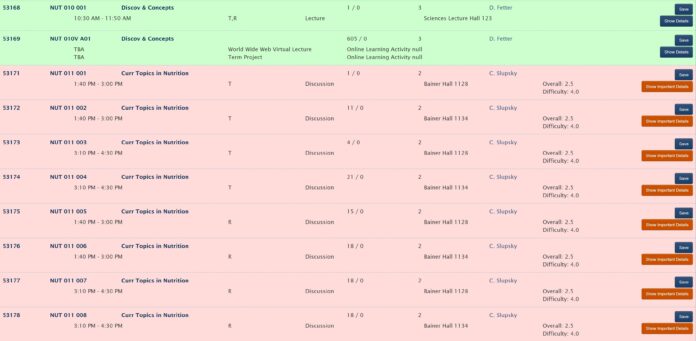The variety in the ways instructors are performing synchronous and asynchronous classes makes it harder to create registration codes, according to Interim Vice Provost and Dean of Undergraduate Education Cynthia Ching
With a variety of UC Davis students now attending classes across the globe and with varying levels of internet access and at-home responsibilities, asynchronous classes have become a way for the university to accommodate student needs. Despite the flexibility in being taught asynchronously, students are still limited on the type of classes for which they can register on Schedule Builder if two class times conflict.
Cynthia Carter Ching, the interim vice provost and dean of undergraduate education, talked about asynchronous classes and the university’s accommodations for online learning, which involve leaving most instruction delivery decisions to departments and individual instructors.
“[Online learning] created a lot more conversations on campus about, ‘How do we do this in the best possible way so that more students access their courses?’” Ching said. “Some amount of asynchronous instruction resulted from that shift in thinking.”
Ching mentioned how asynchronous classes have been a way for students to gain more flexibility, a change that is helping many.
“It’s quite good,” said James Zhang, a first-year physics major and an international student who is currently back home in China. “My math class occurs at 4 or 5 a.m. in China. If I take the asynchronous class I can see the [lectures on my own time].”
Zhang plans on taking three more classes asynchronously next quarter.
The university has now developed a code for remote/asynchronous learning which is visible to students when signing up for classes. Yet, this feature does not accommodate for classes which might be taught asynchronously, but are still set at a fixed time in Schedule Builder. If a student wants to sign up for two classes scheduled at the same time, the system prevents them from doing so.
“The thing is, a class can only get that [remote/asynchronous registrar code] if there’s going to be absolutely zero scheduled occurrences of that class period,” Ching said. “So, it’s going to be 100% asynchronous including the final exam.”
Ching mentioned that despite courses being taught asynchronously, instructors may choose to keep some form of their class synchronously, such as holding the lectures at a certain time but not requiring students to attend or holding the final at its scheduled time despite lectures being asynchronously, making them unavailable for that code.
Amanda Kong, an associate instructor in the English department, teaches one of these courses which is largely asynchronous with optional synchronous elements. Kong sent out a survey to her class to determine if she should conduct lectures at a time when most students could attend synchronously, but she mostly conducts the class asynchronously and students can watch recorded lectures if they choose to do so.
The decision comes from Kong’s own experience as a community college and commuter college student.
“I have been working part-time to full-time pretty much my entire college career,” Kong said. “If you work, there shouldn’t be a barrier, you should still be able to take this class.”
Kong said that it is not an issue for her if students wish to take two asynchronous classes at the same time, hoping students will self-assess the amount of work required and decide if they are able to complete it. She did, however, express worries about registration.
“[The classes] might be mislabeled on Schedule Builder unknowingly, like being scheduled at a certain time despite being asynchronous,” she said.
Bonnie-Nghi Huynh, a first-year biomedical engineering major, said she hopes for an adjustment to Schedule Builder registration.
“I would really like that,” Huynh said. “I really wanted a specific math professor, but because my chemistry lecture conflicted with that math lecture, I wasn’t able to choose that math professor and had to opt for another math professor despite those classes being taught asynchronously.”
She is planning on taking four classes next quarter asynchronously.
According to Ching, the variety in the ways instructors are performing synchronous and asynchronous classes makes it harder to create registration codes for the ways classes are offered.
“We’re innovating and doing all sorts of things that we didn’t do before, but sometimes it’s hard for the systems to catch up with how instructors are innovating,” Ching said. “We don’t have codes for ‘This is an optional synchronous/asynchronous discussion.’”
Yet, if the university chooses to incorporate these options for students in the future, the task can be accomplished, according to Meggan Levitt, the assistant vice provost and associate chief information officer for Academic Applications.
Levitt is part of the Information and Educational Technology (IET) department, which oversees information systems such as Banner, Schedule Builder and OASIS, and spoke on the matter. IET works closely with the Office of Registrar, Undergraduate Education, Student Affairs and the Student Technology Governance Committee.
“It is possible with planning and the appropriate campus prioritization,” Levitt said. “Schedule Builder is a UC Davis-built application versus one we purchase from a vendor so we have the in-house expertise to modify it.”
Written by: Annette Campos — campus@theaggie.org





